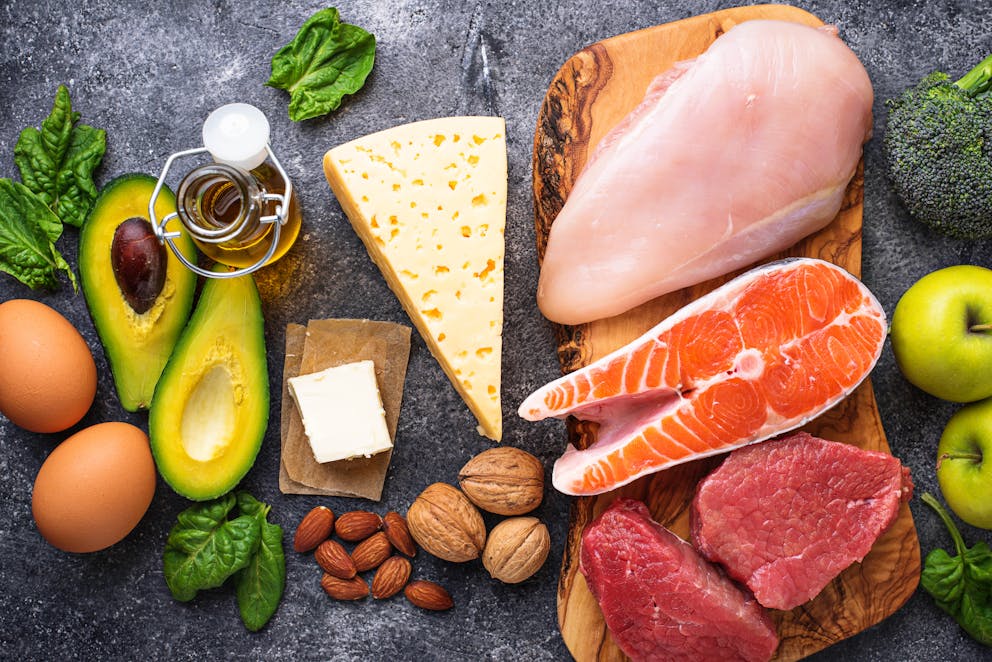Low Carbohydrate Diet versus Ketogenic Diet Whats the Difference
You've heard the buzz about low-carb diets, and maybe you've even tried one yourself. But what about the ketogenic diet? You've got to wonder if this latest obsession with cutting carbs and embracing fats is genuinely groundbreaking or merely today's hot topic.
As someone who's been there and done that, I want to share the real deal on the difference between the ketogenic diet and a low-carb diet.
Sure, they both involve cutting carbs, but there's a lot more to it than that. The keto diet steps in like a champion among low-carb plans, cranking up your body’s fat-melting abilities. But is it right for everyone? Let's find out.
Understanding the Ketogenic Diet
The ketogenic diet has gained immense popularity in recent years as a powerful tool for weight loss and improved health. But what exactly is this high-fat, low-carb way of eating, and how does it work?
The keto diet is designed to shift your body into a metabolic state called nutritional ketosis. This happens when you drastically reduce your carb intake while increasing your consumption of healthy fats and keeping protein moderate.
What Constitutes a Ketogenic Diet?
To achieve nutritional ketosis, the typical macronutrient ratios for a ketogenic diet are:
70-80% of calories from fat
20-25% of calories from protein
5-10% of calories from carbohydrates
Limiting carbs to around 20-50 grams per day forces your body to burn fat for fuel instead of glucose. This metabolic switch triggers the production of ketones, which become your body's primary energy source.
The Role of Protein in Ketosis
While the keto diet emphasizes fat, protein still plays a crucial role. However, it's important to consume the right amount. Too much protein can kick you out of ketosis, as excess protein is converted to glucose through a process called gluconeogenesis.
The ketogenic diet recommends a moderate protein intake, typically around 0.8-1.2 grams per kilogram of body weight. This helps maintain muscle mass while avoiding the toxic effects of excessive protein on the brain, kidneys, and gut.

Distinguishing Low-Carb Diets from Keto
While the ketogenic diet is low-carb, not all low-carb diets are keto. The main difference lies in the macronutrient ratios, particularly the amount of carbs and protein consumed.
Low-carb diets encompass a broader range of eating patterns that restrict carbohydrates to varying degrees. Some famous examples include the Atkins diet, the South Beach diet, and the paleo diet.
Carbohydrate Limits Across Diets
The ketogenic diet is one of the most restrictive low-carb diets, limiting carbs to 20-50 grams per day. In contrast, other low-carb diets may allow 50-150 grams of carbs daily.
For instance, the Atkins diet starts with a very low-carb induction phase but gradually increases carb intake over time. The South Beach diet provides more carbs from fruits, vegetables, and whole grains.
Protein Intake Variability
Another critical difference between the keto diet and other low-carb approaches is protein intake. While keto emphasizes moderate protein, many low-carb diets encourage higher protein consumption.
This higher protein intake can make achieving and maintaining nutritional ketosis more challenging. It's one reason why the ketogenic diet is considered a more targeted approach for specific health goals.
Health Implications of High-Protein Intake
While protein is essential for building and repairing tissues, consuming too much can negatively affect health. This is particularly relevant for those following high-protein, low-carb diets.
When you eat more protein than your body needs, the excess is broken down and can strain your kidneys, liver, and digestive system. Over time, this may lead to serious health issues.
Risks of Excessive Protein
Consuming too much protein can cause a buildup of uric acid and ammonia in the body. This can lead to kidney stones, gout, and other health problems. Excessive protein intake has also been linked to an increased risk of certain cancers, such as colon cancer.
Moreover, a high-protein diet can disrupt the delicate balance of gut bacteria, leading to digestive issues and inflammation. It may also negatively impact brain health by interfering with neurotransmitter production.
The Importance of Protein Quality
When following a low-carb or ketogenic diet, choosing high-quality protein sources is crucial. Focus on whole, minimally processed foods like grass-fed meat, wild-caught fish, free-range eggs, and organic dairy.
These nutrient-dense protein sources provide essential amino acids, healthy fats, and important micronutrients. They also tend to be more satiating, helping you feel full and satisfied on a low-carb diet.
The recommended amount of protein per meal is between three to eight ounces, depending on your needs and goals. Insufficient protein intake can lead to muscle loss, weakened immunity, hair loss, and other health issues.
Benefits of Lowering Carbohydrate Intake
Despite their differences, both the ketogenic diet and other low-carb approaches share some expected benefits. By reducing carbohydrate intake, these diets can help improve blood sugar control, increase insulin sensitivity, and promote weight loss.
When you consume fewer carbs, your body produces less insulin, a hormone that regulates blood sugar levels. This can be particularly beneficial for people with type 2 diabetes or insulin resistance.
Preventing High-Carbohydrate Diet Side Effects
In addition to blood sugar benefits, lowering carb intake can also help prevent the adverse side effects associated with high-carbohydrate diets. Consuming too many carbs, incredibly refined and processed ones, has been linked to various health problems.
These include eye damage, liver inflammation, fatty liver disease, heart damage, nerve damage, and brain dysfunction. The keto diet and other low-carb approaches can help mitigate these risks by reducing carb intake and focusing on whole, nutrient-dense foods.
Navigating Protein Requirements with Intermittent Fasting
Intermittent fasting, an eating pattern that alternates between periods of fasting and eating, has become increasingly popular in recent years. Many people combine intermittent fasting with low-carb or ketogenic diets to enhance their health benefits.
However, it's essential to consider how fasting affects your protein needs. When you fast, your body becomes more efficient at using protein, which can help preserve muscle mass.
At the same time, fasting can also make your body more conservative with protein utilization. This means you may need to adjust your protein intake accordingly, especially if combining a low-carb diet with more extended fasting periods.
As always, it's best to consult a healthcare professional or registered dietitian to determine your protein needs based on your health status, goals, and fasting schedule.

Decoding Diets: Keto vs. Low-Carb
This book navigates the intricate differences between two popular dietary approaches, shedding light on their distinct principles and effects. Delving into the intricacies of ketogenic and low-carb diets clarifies the nuances that set them apart.
As readers explore dietary choices, they'll uncover each approach's unique benefits and challenges. And what better way to illustrate these distinctions than with the indulgent delight of keto French toast?
This mouthwatering creation exemplifies the ketogenic lifestyle and offers a delicious glimpse into how dietary choices can be both nutritious and enjoyable.
Whether you're a seasoned dieter or new to the scene, this guide promises to unravel the complexities of keto and low-carb diets, all while tantalizing your taste buds with the irresistible allure of keto French toast.
Conclusion
So, what's the verdict on the difference between the ketogenic diet and a low-carb diet? While both involve reducing carbs, the ketogenic diet takes it to the next level by putting your body into a state of ketosis.
This can lead to some pretty impressive weight loss and health benefits, but it's not for the faint of heart.
Low-carb diets, on the other hand, offer a bit more flexibility and may be easier to stick with in the long term. The best diet is the one that works for you and your lifestyle.
Whether you go full keto or reduce the carbs, remember that sustainable weight loss is more than just what you eat. It's about finding a healthy balance you can maintain for the long haul.
So, don't be afraid to experiment, listen to your body, and find what works for you. With patience and persistence, you'll be well on your way to reaching your goals.
Previous blog
Best Foods for Benign Prostatic Hyperplasia or BPHNext blog
What is Hepatitis C?
Popular
08/21/2024
46.7K views
05/22/2024
41K views
11/18/2024
243K views
03/18/2024
11/21/2022




